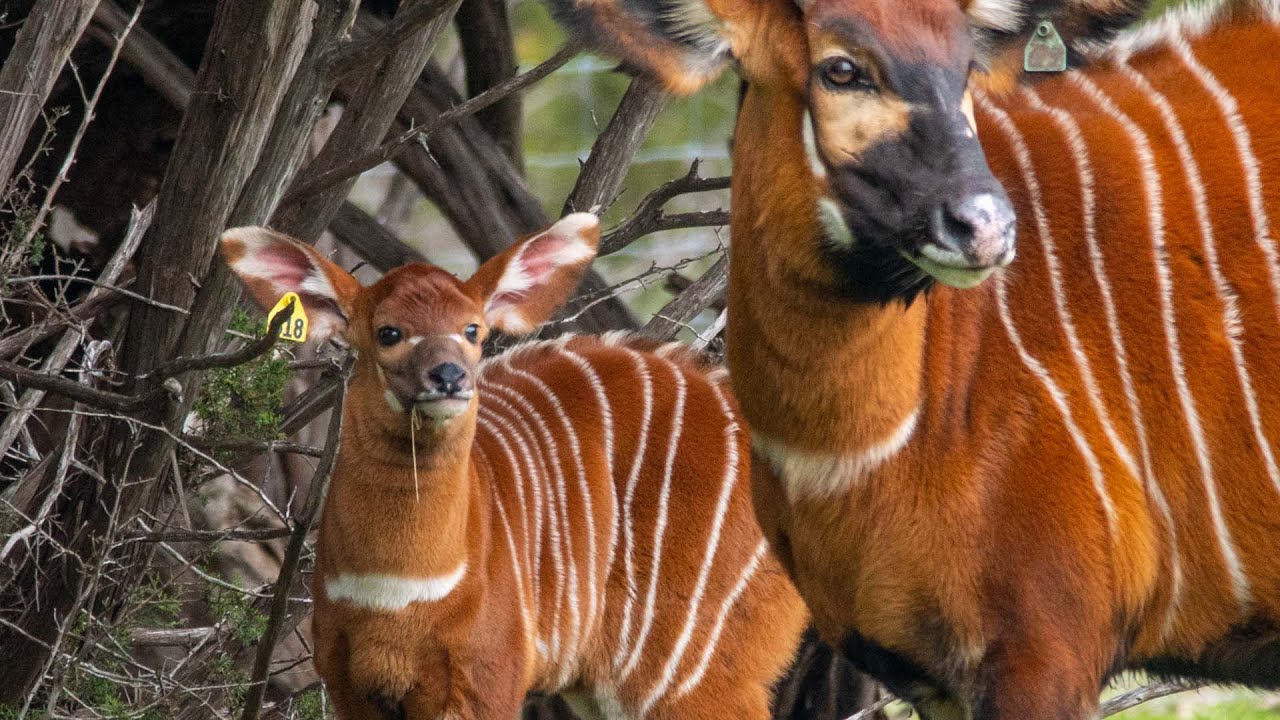- Understanding the Bongo’s Natural Habitat and Behavior
- Significance of Zoo Management in Bongo Conservation
- Strategies and Techniques in Wildlife Conservation Efforts
- Educational Insights from Bongo #Zoomies Videos
- Influence of Media and Human Interaction on Wildlife Awareness
The bongo is a strikingly beautiful and elusive species, resonating with both scientific communities and wildlife enthusiasts. Native to the dense forests of Africa, this species stands out due to its vibrant reddish-brown coat adorned with vertical white stripes, and a majestic set of spiraled horns. Their habitat, comprising rainforests that provide cover and leafy vegetation, is crucial for the bongo’s survival. As large forest antelopes, their behavior in the wild reflects their adaptation to a life of limited visibility and dense cover. They are primarily nocturnal, utilising the cover of darkness to feed on leaves, grasses, and shrubs. This feeding pattern helps mitigate predation risks from larger carnivores. Bongos are known to be shy and reclusive, making direct observations in the wild challenging. Such natural behavior necessitates a comprehensive understanding for effective zoo management and conservation strategies.
Zoo management plays a pivotal role in the preservation of endangered species like the bongo. Modern zoos are bastions for education and the conservation of biodiversity. They offer a refuge for species that might otherwise face extinction due to habitat loss and poaching. Effective zoo management strategies involve creating environments that mimic the bongo’s natural habitat. Details such as appropriate vegetation, space to roam, and social group structures must be carefully curated. By providing medical care, shelter, and breeding programs, zoos ensure the health and genetic diversity of bongos in captivity. These elements contribute to our understanding of the species, which is vital for proper care and eventual reintroduction efforts. Integrated conservation programs often combine in-situ and ex-situ techniques, acknowledging that the survival of species like bongos depends on both protecting wild habitats and managing populations in human care.
Wildlife conservation efforts for the bongo extend beyond the confines of zoos. They incorporate a multifaceted approach including habitat preservation, anti-poaching initiatives, and public awareness campaigns. The most pressing threat to bongos in the wild is habitat destruction, primarily due to logging and agricultural expansion. Conservation organizations work tirelessly to protect natural forests and implement sustainable land-use practices. Anti-poaching laws and patrols are set in place to protect the wild populations, with community engagement proving vital to the success of these efforts. Educating local communities about the significance of preserving bongos can foster a cooperative environment where humans and wildlife coexist harmoniously. Transfers of captive-bred bongos to secure habitats further aid in bolstering their numbers in the wild. These concerted efforts are essential for preserving this splendid species for future generations.
The concept of Bongo #Zoomies has taken the digital world by storm, as fascinating videos of bongos engaging in playful behavior captivate audiences globally. These videos offer an exceptional opportunity for education and outreach, shedding light on the unique behavioral patterns of bongos. Observing their #Zoomies—short bursts of playful behavior that involve dashing around with exuberance—provides insight into their physical capabilities and social dynamics. These moments of play, typically more visible in captive settings, highlight the importance of environment enrichment for bongos in zoos. Such enrichment encourages natural behaviors, contributing to the well-being of bongos. Moreover, these engaging depictions of bongos serve to enlighten viewers, stimulating interest and concern for the species. By visually connecting people to wildlife, these videos foster a deeper understanding and support for conservation initiatives, emphasizing the significance of these majestic creatures.
The influence of media and human interaction is profound when it comes to wildlife conservation awareness. Bongo #Zoomies videos illustrate how digital platforms can serve as powerful tools in global education and conservation advocacy. The dynamic reach of social media allows for disseminating information swiftly and broadly, capturing the attention of diverse audiences. These visual narratives often accompany critical conservation messages that underpin the necessity of protecting wildlife habitats. By highlighting the threats bongos face and ways individuals can contribute to their conservation, such media content plays a crucial role in behavioral change and policy support. Ultimately, both virtual and in-person interactions foster greater awareness, encouraging collective actions to preserve vital ecosystems and biodiversity. As the bond between humans and wildlife strengthens, so does the commitment to protecting the planet’s most vulnerable inhabitants.
*****
Source Description
Introducing our new little mountain bongo calf! And it’s got a case of the #zoomies.
It’s always exciting when there are new little ones in the park, but especially so when it’s a critically endangered species like the mountain bongo. #bongo #antelope


